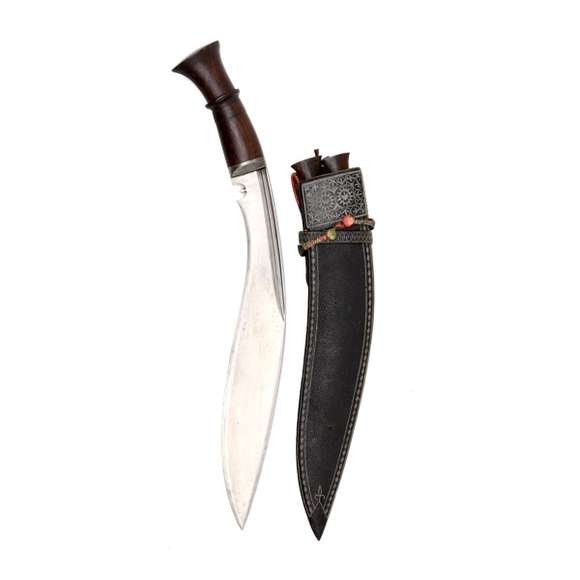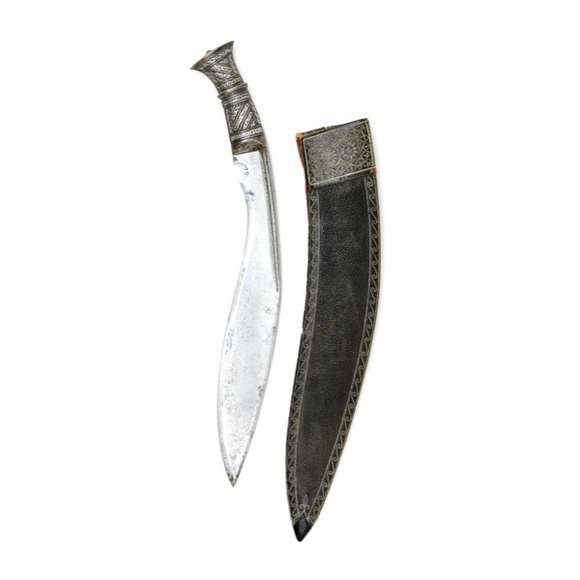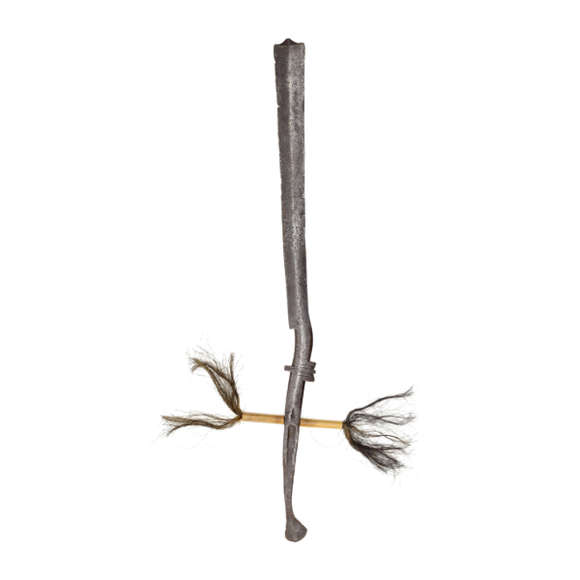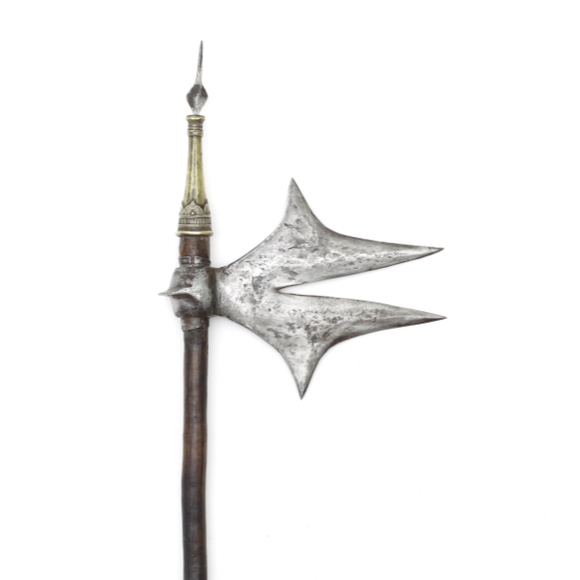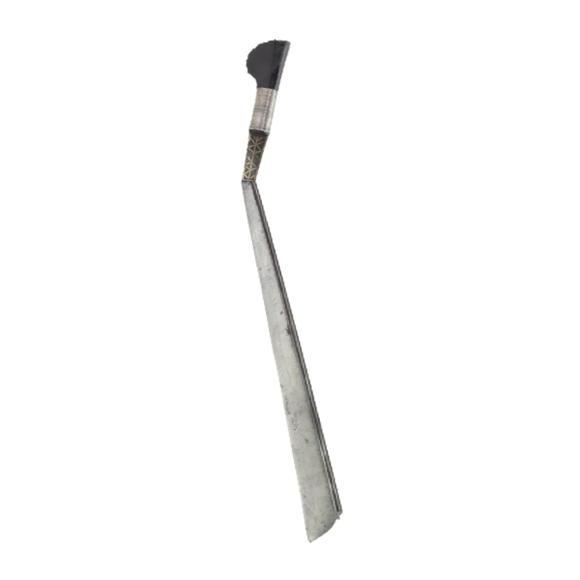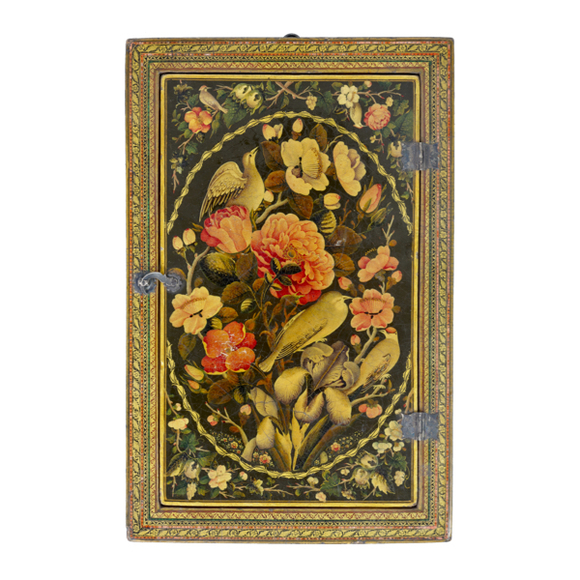Language: English
Source: Lord Egerton of Tatton, 1880
Description
The Khyber knife is a long, single-edged sword with a wide base, tapering gradually to a sharp tip. It has a T-shaped spine. It was first mentioned by that name by Egerton, and the name has since been in use among collectors. Alternatively, Egerton gives salawár yagathan as an alternative name. Locally the weapon was known as charas, charay or churra.


A better-than-average Khyber knife.
When sheathed a stop closes off the scabbard's mouth An unusual feature.
It was probably added to protect the overlaid and pattern welded blade from sand and dirt.
Sold by Mandarin Mansion in 2023.
Part of the handle disappears in the scabbard, much like the Caucasian shashka or Indo-Persian kard daggers. Some are large knives, while others are of sword size. Although they look like thrusting weapons, and with their T-cross-section, they seem well capable of piercing armor, British forces fighting against them in the 19th century noted they were primarily used for delivering heavy cuts.
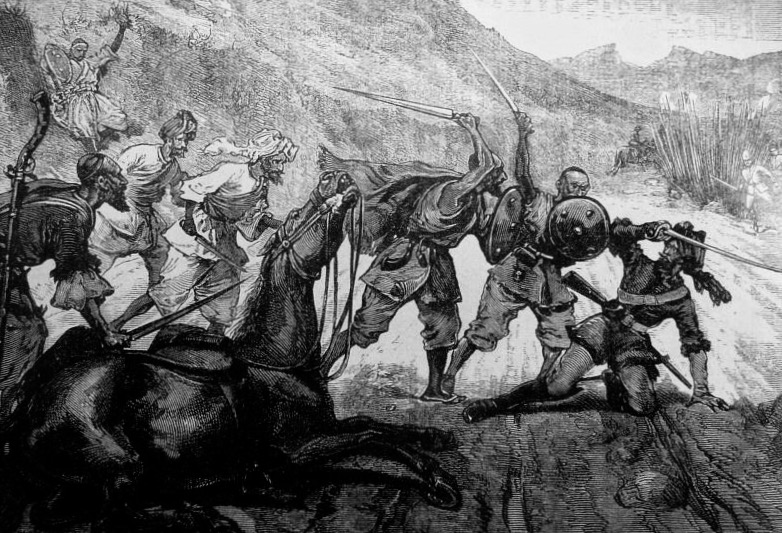
Khyber tribesmen attacking Indian Sepoys of the British army with their Khyber swords.

Shinwaris of the Khyber Pass, circa 1890.
From "Tribes on our Frontier" series of photos by Bourne & Shepherd
The Khyber pass
The Khyber knife is primarily associated with the Afridis and Shinwari, a subtribes of the Pashtun who inhabit the Khyber pass and surrounding areas. This pass goes through the Spin Ghar mountains, from Afghanistan to Pakistan, connecting Central Asia with the Indian subcontinent. An integral part of the ancient Silk Road trade route, and of great strategic importance, the pass was used for invasions by no less than Alexander the Great, the Mongol Horde, and, more recently, Sikh ruler Ranjit Singh. Most villages in the pass are Afridis, who the British regarded as "warlike people". The Shinwari offered "protection" to travelers for a fee.
Production centers
Most Khyber knives are of tribal workmanship and finish. The very best were executed in dark Persian wootz steel, with gold koftgari and were probably made by smiths in larger cities. Lord Egerton had a Khyber knife with a dark blade that he described as "Kara Khorassan blade. Peshawur." "Kara" means black, and Khorassan is a region in present-day Iran, where the famous dark Persian wootz came from. Peshawar is on the Pakistani side of the Khyber Pass. He further mentions that ch'urrá were made in Khorassan, Kabul, and Jellalabad.
Khyber swords were sometimes worn by Punjabi, and some may have been made in north India. Sikhs from Punjab occupied the Khyber Pass from 1798 up to the annexation of Punjab by the British in 1849.
References
Egerton. An Illustrated Handbook of Indian Arms, London, 1880. Page 144.
Stone: A Glossary of the Construction, Decoration and Use of Arms and armor, 1934. Reprint by Dover, 1999, p. 354.


An exceptional Khyber knife, of brilliant black wootz steel. Ivory grip scales and gold koftgari at the base.
Sold by Mandarin Mansion in 2016.

